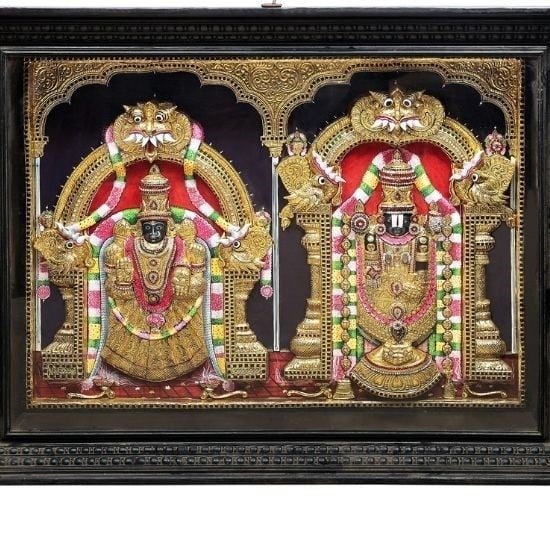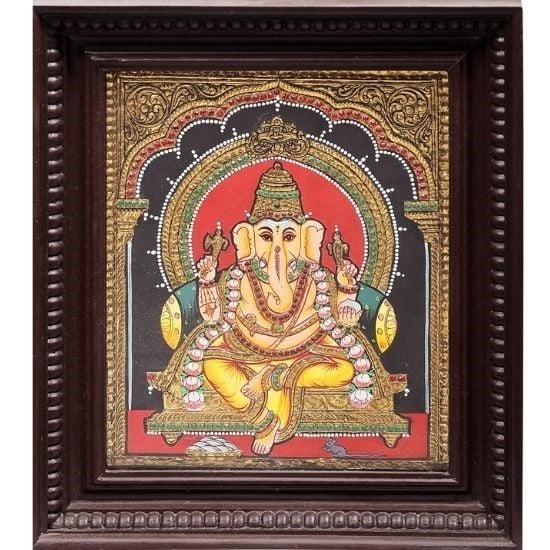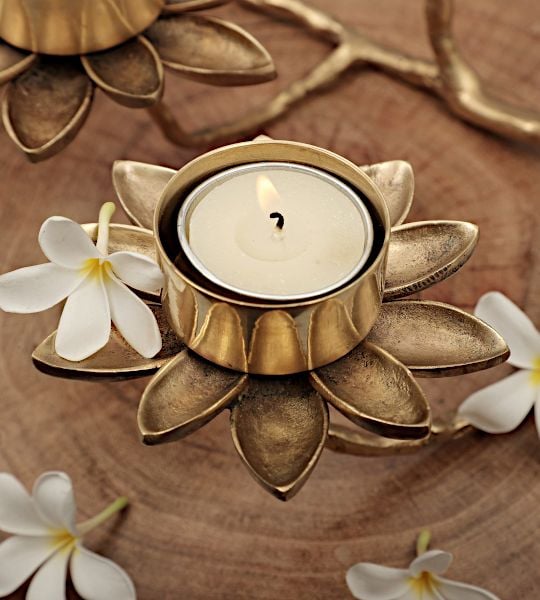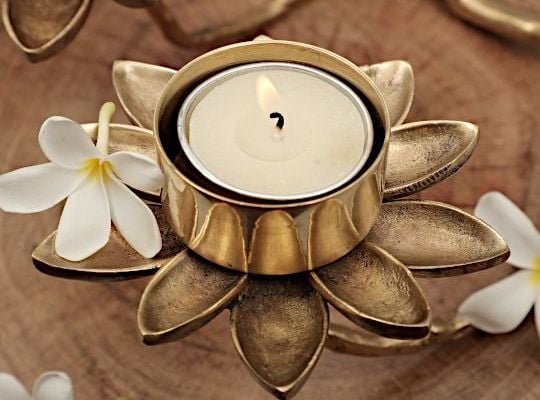Mostrando 1 a 2 de 2 resultados
Mostrando 1 a 2 de 2 resultados
Tanjore Painting: Art of the Gods
When we think of Indian art, many of us immediately imagine resplendent depictions of the Hindu gods. We think of bright colors, beatific poses, and gold leaf.
Whether we know it or not, what we are thinking of are Tanjore (Thanjavur) paintings.
Also known as “religious paintings with a royal heritage,” this form of south Indian visual art began in the town of Tanjore in the 16th century. These oil paintings have been made by indigenous artists for generations, and it is kept alive by practitioners who faithfully replicate the old ways and the beloved style.
Published in Oct 2021
Thanjavur can be considered the heart of the Tamil country, with a civilization that reached great prominence during the Chola dynasty. It played a vital role in attracting talent and in keeping alive, creative traditions through many centuries. Tanjore or Thanjavur is one of the two major artistic regions and political powers in the southern Indian subcontinent that later spread in western culture during the British Raj. In the 16th century, it had become a great centre of dance, music, architecture, and the arts—sculpture, woodcraft, metal casting, mural painting. Thanjavur is famous for its highly advanced handicraft industries. Describing the city, British officer Hemmingway, writing in 1906, states- “Tanjore was known as the home of the fine arts under the native rulers who by their patronage attracted to their capital, the producers of most articles of luxury". This reputation still survives, though to a much modified degree.
Published in Oct 2021






